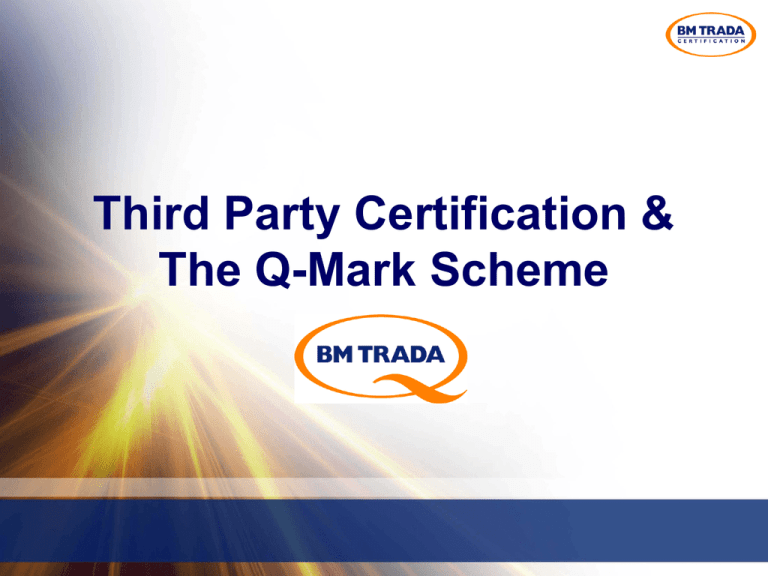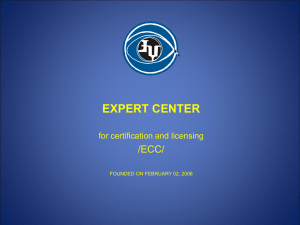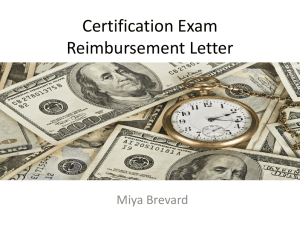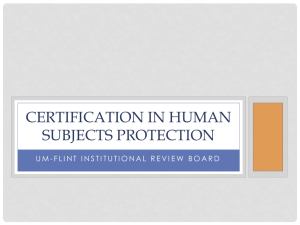Q-MARK Certification process - Bereco Timber Windows and Doors
advertisement

Third Party Certification & The Q-Mark Scheme What is third party certification? • Independent process of certifying that a manufacturer continues to comply with the performance aspects of a specification for a product / product range • For certain products, a mandatory requirement for the Police initiative ‘Secured by Design’ (SBD) The benefits of specifying third party certification • Provides confidence in the manufacturer of a performance critical product • Provides confidence that the quality of the product will be consistent at all times • Provides confidence that the product will be fit for purpose and will perform to the required standard • Reduces the risk of product failure • Enables your clients to make a commercially sound investment in performance critical products BM TRADA Q-MARK Third Party Certification • Operated by BM TRADA Certification one of the UK’s foremost certification bodies with over 35 years experience • BM TRADA Certification has been UKAS accredited since 1991 • Backed by the Timber Research and Development Association (TRADA) with over 75 years experience • A recognised and widely accepted quality standard both in the UK and globally • Only 3 manufacturers currently carry Q-Mark certification in Joinery (2 in UK) BM TRADA Q-MARK High Performance Timber Window Scheme • Enables specifiers to select high quality, high performance timber windows • Offers performance levels in excess of that achievable by the majority of windows (of any material) • Offers extended life span and ‘best value’ through reduced life time costs • The scheme demands the highest standards in relation to: • Design • Performance • Manufacture Timber Window certification process Design Appraisal Initial type test Documented Specifications & Installation instructions Factory Production Control Requirements Initial Audit Visit Periodic Periodic Audit Tests Audit Visits Marking of Certified Product Q-MARK Certification process Step 1. Design appraisal • A rigorous design appraisal carried out by TRADA • Verifies that the window is designed for longevity • Covers design issues including: – – – – – – Water drainage and absence of water traps Preservation End grain protection Protection of the sealed unit Adhesives Finish (appropriateness, application process, window design suitability) Q-MARK Certification process Step 2. Initial Type Testing • Sample testing of a window’s key performance attributes including: – BS 644 ‘General performance’ – BS 6375 -1 – ‘weather’ (highest category required) – BS 6375 – 2 - Operation, Strength and Durability – BS EN ISO 10077-1 Thermal performance – Cycling to 50,000 operations Q-MARK Certification process Step 3. Documented Specifications – Documented product specification to be in place for each window type – A set of documented installation instructions for each window type will need to be produced Q-MARK Certification process Step 4. Factory Production Control • To ensure consistency of production manufacturers must produce a documented Quality Management System • This needs to integrate with an approved Quality Management Scheme such as ISO 9001 Q-MARK Certification process Step 5. Initial Factory Audit • Factory audits are conducted by specialist BM TRADA auditors • Auditors review the following: – Factory production control process (manufactured product consistently matches design specification) – Traceability – Glass & glazing – 3rd party certification of sealed units to EN 1279 – Timber selection to BS EN 942 – Coatings adherence – Workmanship to BS 1186 part 2 – Installation instructions Q-MARK Certification process Step 6. Product marking / on-going audits • Successful completion of the certification process is signified by: – Marking of the certified product with BM TRADA Q-Mark labels – Issuing of BM TRADA Q-Mark certificate • On-going compliance with scheme requirements is ensured via: – Annual factory audits – Periodic sample testing Q-MARK Certification process Certificates Registration Certificate Any Questions?






